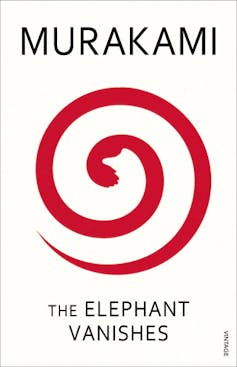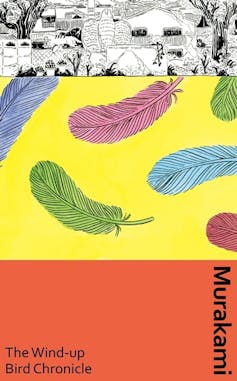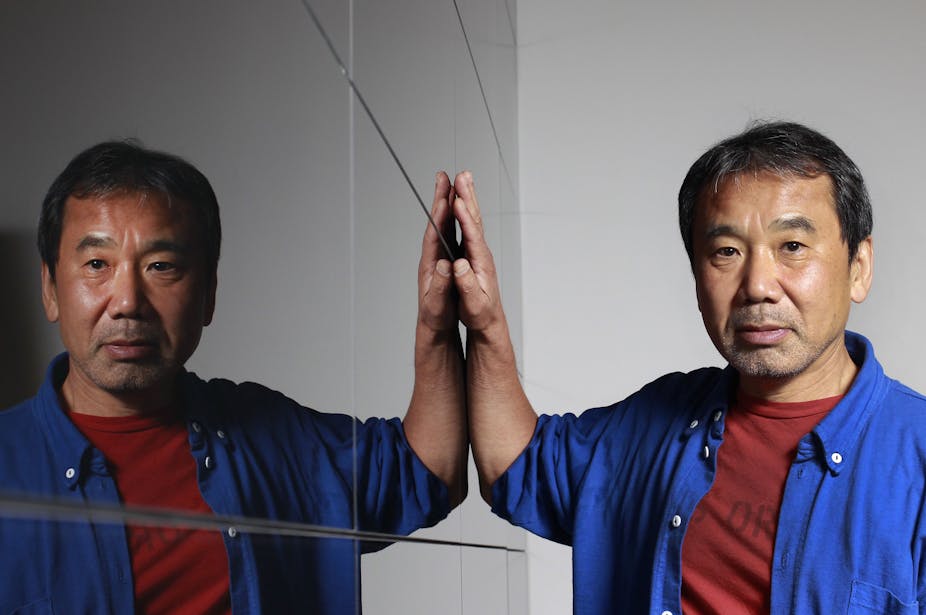With more than 40 years of writing to choose from, it’s difficult to know where to begin when reading Haruki Murakami. Earlier this year in Japan, he published his 15th novel, The City and Its Uncertain Walls, though the release date for an English translation has not yet been announced.
While Murakami first gained attention in the English-reading world with the translation of The Wind-up Bird Chronicle in 1997, his writing career began almost two decades earlier with the publication of Hear The Wind Sing and Pinball, 1973. These first two novels were not widely available in English until 2015, and consequently, Japanese and English readers have read Murakami in quite different contexts and chronologies.
When he wrote his first works, the bristling Japanese bubble economy had not yet burst and the iron curtain still divided Europe. Whereas when he took English readers by storm in the late 1990s, Japan’s days as the leading economic superpower were long gone, as was the tension of the cold war. Here’s a four-step guide for English readers who wish to read Murakami in “the Japanese way”.
1. Norwegian Wood (1987)

The first work you should read is Murakami’s breakthrough novel, Norwegian Wood. Although its immediate commercial success meant that it was published in English only two years later, the initial translation was intended for English language learners and was only available in Japan.
The English version available across the world today is a re-translation from 2000. While this novel introduces the typical lonesome, first-person male narrator that is recognisable across the author’s works, Norwegian Wood is in many ways not classic Murakami.
The story takes place in a more realistic setting than those he later became known for. Still, I recommend starting with this novel because this is what most Japanese readers would have done at the time.
Read it and think of how the world was back then. Why was a novel that introduces so much death, loss and regret embraced by Japanese readers right at a time when – on the surface at least – things could not have been better in their country?
2. The Elephant Vanishes (1993) & Blind Willow Sleeping Woman (2006)

Next, you should read some of Murakami’s short stories. While most famous for his long novels, he has also written an impressive number of short stories – most of which are yet to be translated.
In Japan, short stories are usually first published ad hoc in literary magazines before being published in books. They are therefore rarely planned as full collections. The works included in The Elephant Vanishes and Blind Willow Sleeping Woman were selected from across his many short stories, specifically for English translation.
They showcase stories from Murakami’s early and mid-career, and give an excellent overview of his diverse writing style. Note, for example, the few works with female and third-person narrators, a sharp contrast to the male voice known so well to his fans.
3. The Wind-up Bird Chronicle (1994)

This is the novel that put Murakami on the literary map in the English-reading world. The narrator is classic Murakami – a male protagonist in search of something, in this case first his cat and then his wife.
Along the way, he encounters inexplicable events, journeys to other worlds, and meets strange people. You may notice that some of the short stories from the two aforementioned collections work as forerunners for this novel. This clear connection between short stories and novels is typical of Murakami.
Before, or in tandem with, reading the novel, I recommend you read Creta Kano (1990). It’s a rather bizarre and ultra-short story which was only translated last year. Ask yourself: who is Creta Kano? And what is the implication for the novel that Japanese readers were able to read this short story first?
4. Hard-boiled Wonderland and the End of the World (1985)

While you await the English translation of The City and Its Uncertain Walls, you can prepare by looking at the closely related novel, Hard-boiled Wonderland and the End of The World.
The Japanese language has several words for the pronoun “I”, and these two novels are told by two narrators using different versions: watashi and boku. Without alternative options for “I”, English translators of such stories are challenged. As a solution, chapters narrated by the watashi character (a kind of cyberpunk, science fiction world) are written in the past tense, whereas boku character’s chapters (a more surreal, virtual fantasy world) are written in the present tense.
Think of what this means in the novel’s general dreamlike setting, and look forward to discovering how this issue is addressed in The City and Its Uncertain Walls.

Looking for something good? Cut through the noise with a carefully curated selection of the latest releases, live events and exhibitions, straight to your inbox every fortnight, on Fridays. Sign up here.

